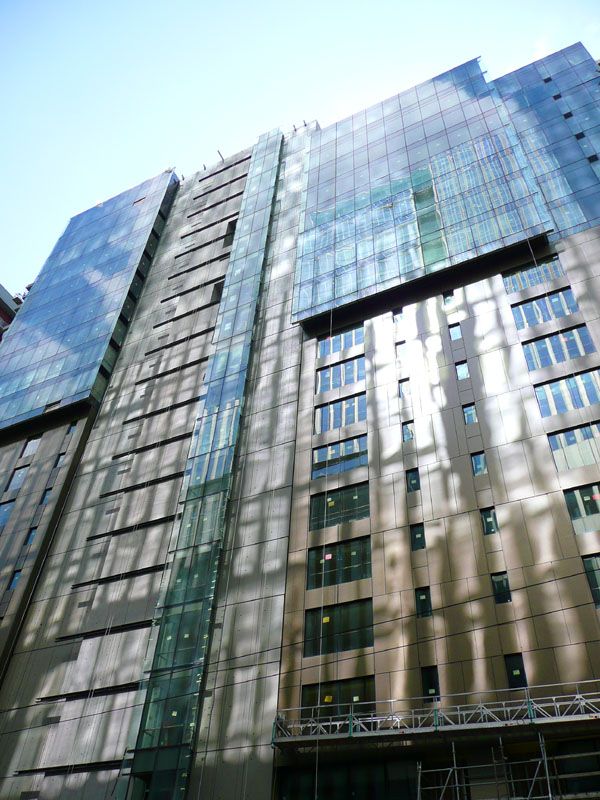Hallucinating on 1st Ave

How unfortunate that we all don’t have a stash of whatever it was that Charles Mudede was smoking when he wrote this Stranger piece on the new Four Seasons building on 1st Ave between Union and University. How fun it would be to look up at a stark, rectilinear glass and concrete tower that forms a massive barrier to sun, mountains, and water, and interpret it as profound connection to the natural world, a form that casts shadows like those from pristine alpine peaks because it is painted the color of mud.
Back here on earth, on the ground, what I see is a building that fails to embrace the street. As you can see in the photo above, roughly half of what the passing pedestrian encounters at eye level while walking along the building on 1st Ave is concrete wall. There are only two relatively insignificant building entrances along the building’s entire 1st Ave street wall (though it’s hard to tell if the opening at the north end is actually going to be a door). I wouldn’t have thought City of Seattle code would allow so much blank facade.
This building is not much interested in being involved with, or contributing to what’s happening on the street. Given the average income of the Four Seasons clientele, this shouldn’t come as a big surprise. It’s an urban enclave, and as such, it’s an affront to the community.

Perhaps the facade all lit up in dappled light as in the photo above was what got Mudede all tripped out on how “the principle of the design is to incorporate the themes of nature into the colors and textures of the building itself.” But that dappled light is no design feature and there’s nothing natural about it — it’s sunlight reflected off the shiny glass and metal tower across the street. Did the NBBJ architects anticipate these reflections, and if so did that have any bearing the facade materials and colors? Not bloody likely.

But for sure, the canyon formed by the Four Seasons and SAM is an impressive space to be in. It’s pretty much 200 feet straight up on both sides of 1st Ave — nowhere else in Seattle is there such a tall pair of street walls so tightly spaced. One might assume that such a space would be oppressive, but I think the urban form works because it only extends over about half of a city block. There is this intriguing sense of compression and release you get when you move through block (…what have I been smoking?). Variation makes for good urban form.
